Istanbul, one of the most popular cities in Europe for weekend trips, annually hosts over 8 million tourists. This number places it among the ten most-visited metropolises in the world. Located in the area between two continents, Europe and Asia, is this thriving industrial and cultural center. You will not find a similar city in this respect around the globe. One of the most valuable and most visited places in Istanbul is Hagia Sophia: a monumental church that now is one of the most famous museums in Europe.
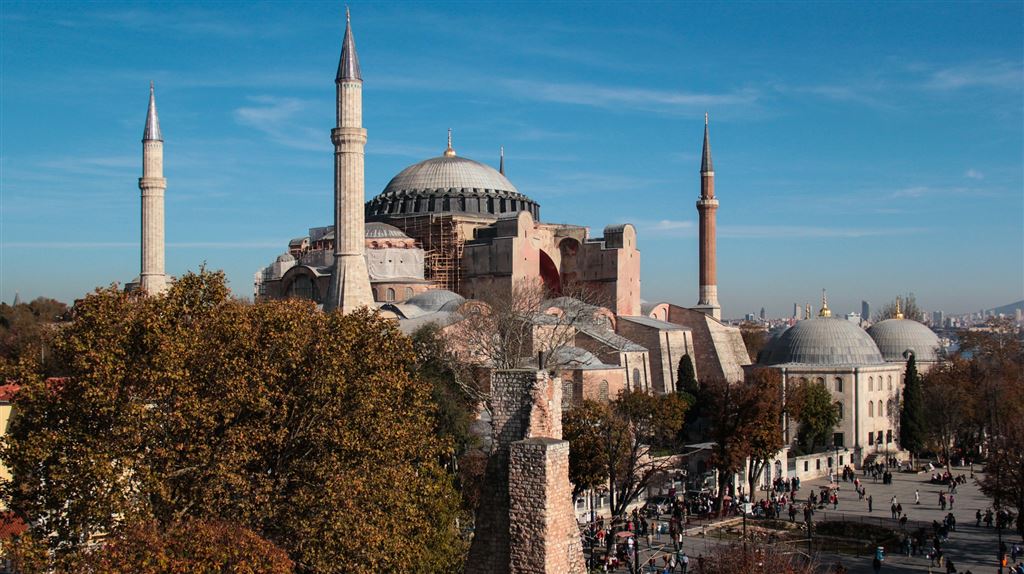
The Combination of Two Cultures
What astounds when you visit Hagia Sophia are coalescent treasures of two cultures: Christian and Muslim. For the first 900 years, Hagia Sophia had been the most significant Christian temple and housed the seat of the Patriarch of Constantinople. All of this changed when the Ottomans conquered the city and transformed the church into a mosque. What did not change, however, was the value and importance of this place. For 400 next year's Hagia Sophia was a central religious spot in Turkey, and one of the most influential mosques in the Islamic world.
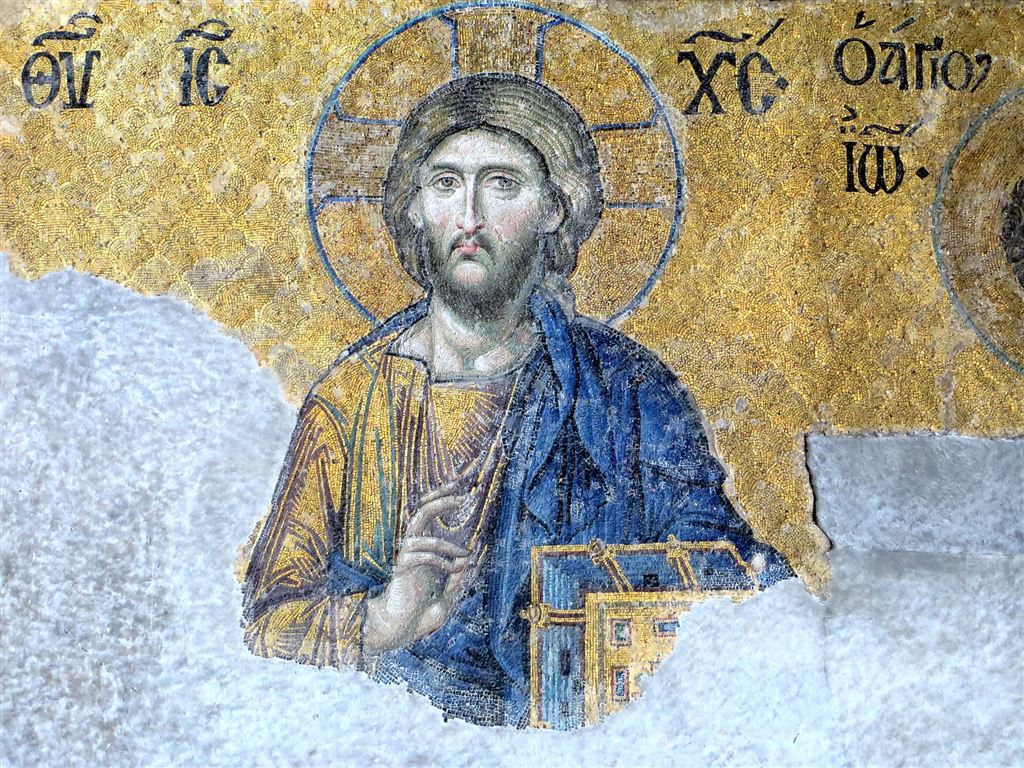
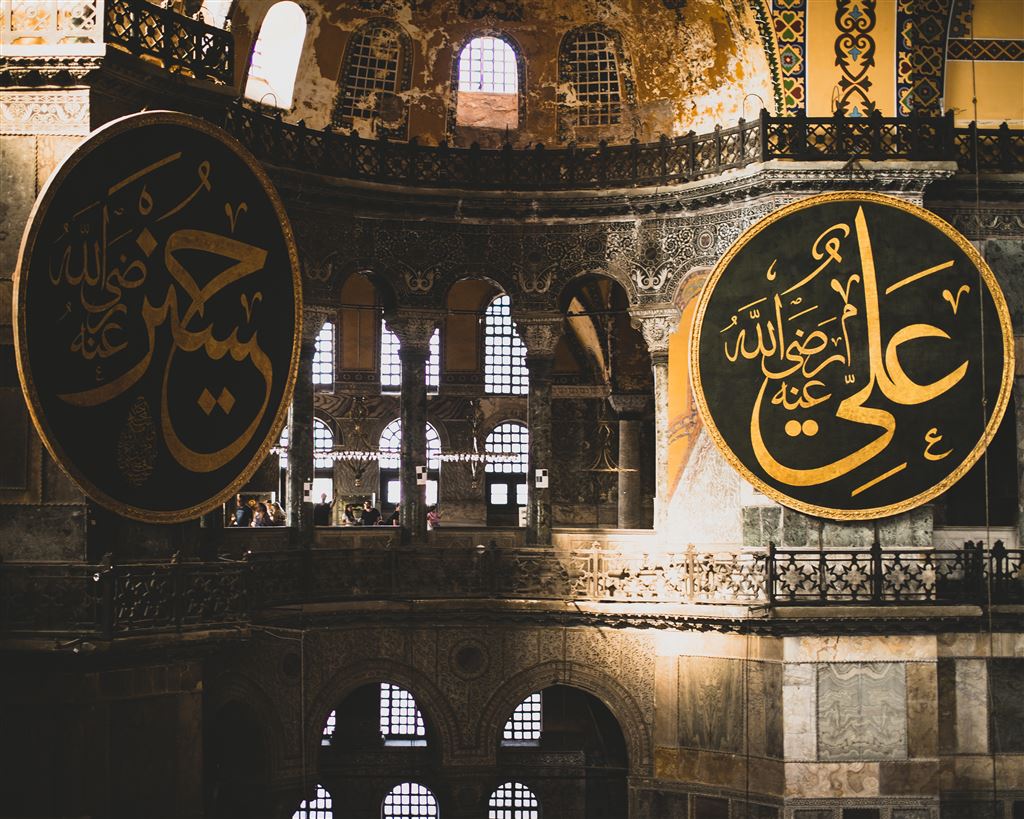
The Amazing Location of the Hagia Sophia
Hagia Sophia is located in the oldest part of Istanbul on the Sarayburnu promontory separating the Sea of Marmara, the Bosphorus strait, and the Golden Horn from each other. The current building is the third church in this location; the two previous ones were destroyed during the riots that occasionally erupted in Constantinople. On the north side, Hagia Sophia borders the Topkapi Palace and the adjoining Gülhane Park. To the south of Hagia Sophia are the Hippodrome and the Blue Mosque. Near the entrance to Hagia Sophia, you will also find the entrance to the Yerebatan Tank.
A Rough History
Built in the sixth century AD by order of Emperor Justinian, Hagia Sophia was to be a symbol of the Emperor's efforts to rebuild the Roman Empire and the main symbol of the new capital, Constantinople.
Construction of the building began on February 23, 532, and it was completed in 537; it lasted only five years, ten months and ten days. Emperor Justinian appointed Isidore of Miletus and mathematician Anthemius of Tralles to oversee the physics of the structure. For a thousand years, Hagia Sophia was the most magnificent temple in the Christian world.
Procopius of Caesarea, one of the most famous Byzantine historians, thoroughly described the construction of the temple in the first chapter of his work "On Building" (Greek: Περι Κτισματων).
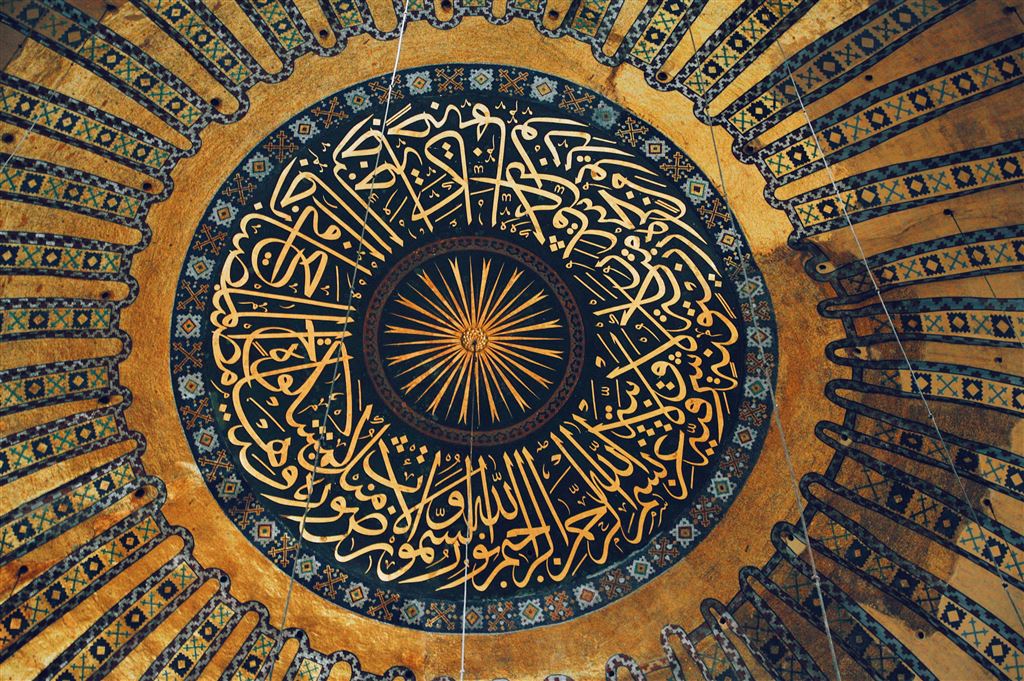
The temple was stripped during the fourth crusade when the Crusaders plundered Constantinople. During the occupation of Constantinople by Latins (1204-1261), Hagia Sophia was transformed into a Roman Catholic cathedral.
After conquering Constantinople by Mehmet II the Conqueror on May 29, 1453, Hagia Sophia became one of the magnificent mosques on the world. Mehmet II founded the first minaret, and the next ones were added during the reign of his successors.
In 1935, Atatürk gave it the status of a museum, which it remains to these days. In recent years, the Hagia Sophia has often been under renovation, but changes make it even more spellbinding to visit.
An Outstanding Tourist Attraction
The Hagia Sophia Museum is open on all days of the week, except Monday, from 10 am to 5 pm. To avoid a long line before the cash register it is best to show up at the entrance at least 15 minutes before opening. Hagia Sophia is on the itinerary for most visitors to Istanbul, so you will not avoid the crowd of tourists inside.
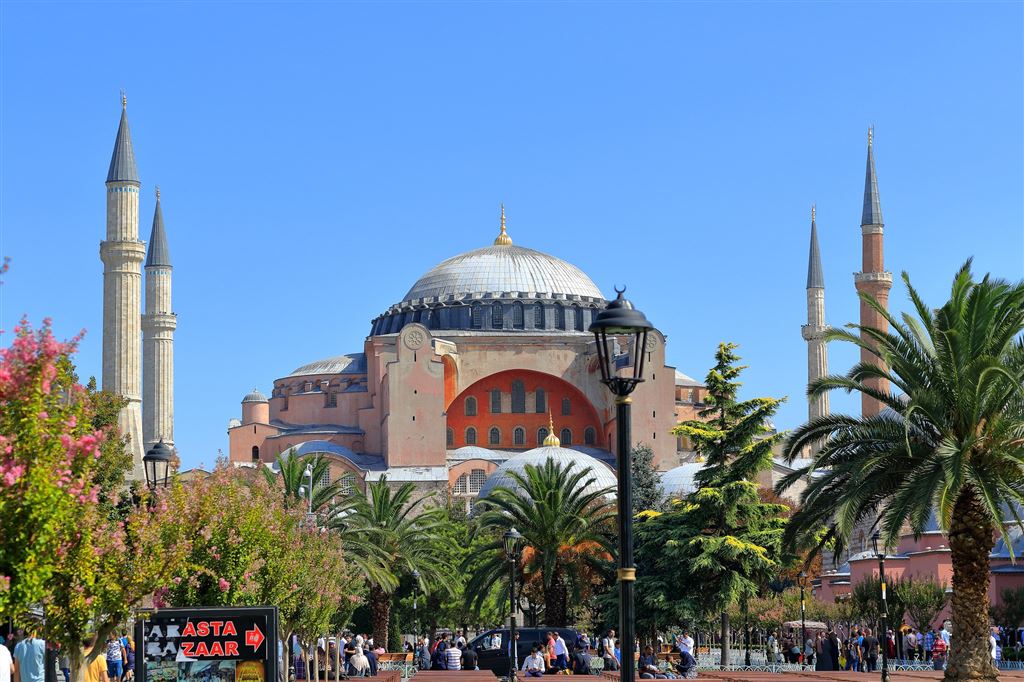
Although Hagia Sophia has its breathtaking charm, visiting should not take you more than 2 hours. If you are short of the time, you can follow the steps for sightseeing found on the posters suspended in the lobby behind the main entrance.
From the outside, Hagia Sophia has the form of several huge lumps covered with different sizes domes and half-dome. The largest of them is 31.5 m in diameter and rises 50 m above the ground.
The interior was richly decorated with mosaics and wall incrustations, but the Turks destroyed most of them after the conquest of the city in 1453.
In 2009, during the renovation works, a piece of a mosaic right next to the dome that shows the faces of the angels with three pairs of wings (Seraphim). These angels had veiled or painted faces since the 15th century when Istanbul was incorporated into the Ottoman Empire, and most of the Seraphim's faces under dome remained unknown until 2009.
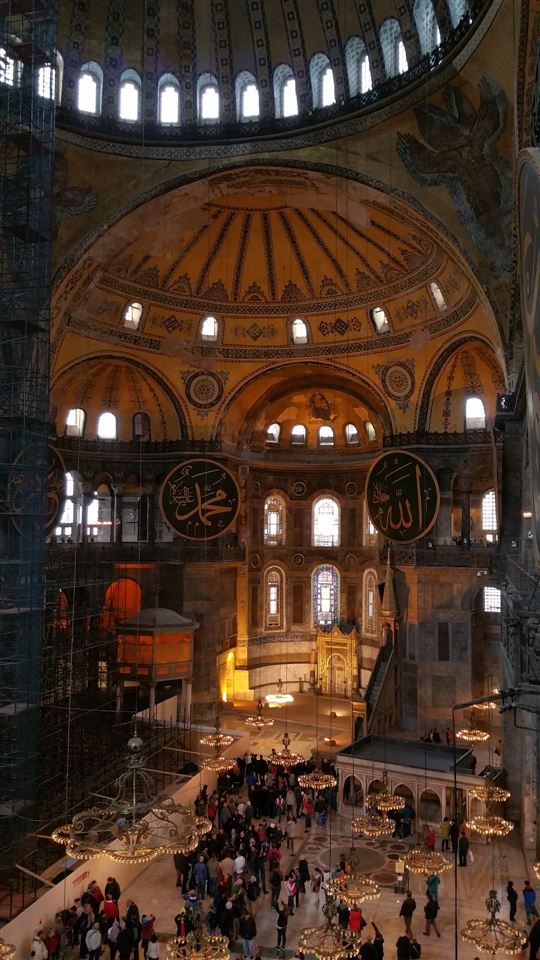
The most famous legend associated with the temple is the one concerning the weeping (or sweating) column. According to legend, if you make a wish, put your thumb in the hole in the column and with the remaining fingers inside, you will be able to turn around, your thumb will be wet, and your wish will be fulfilled.
Architecture and Magnitude of Hagia Sophia
Hagia Sophia is one of the most excellent examples of Byzantine architecture. Unfortunately, during its long history, its modifications were not done well, which has resulted in more of an amalgam of many styles than a coherent temple. The Muslim and Christian tradition's mix is so integrated that it is difficult to imagine how original the building looked.
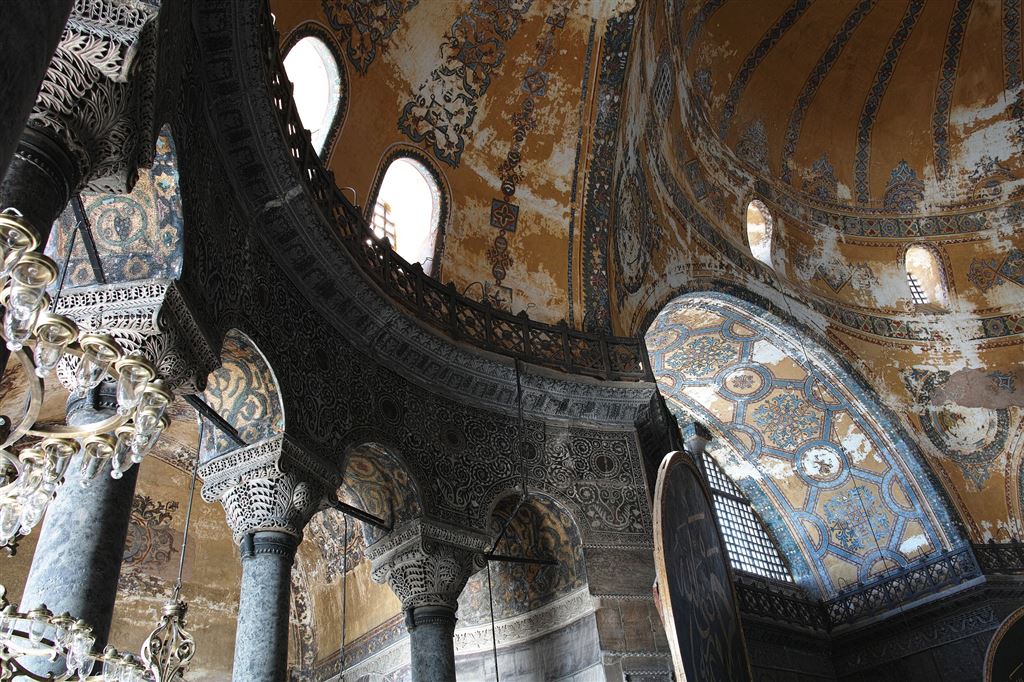
Hagia Sophia is a precious symbol of both Christian and Muslim cultures. Builders used hundreds of tons of gray and green marble and red porphyry to build the church. Stunning vaults scattered among the mosque are decorated with over 15 tons of gold. In the fifteenth century, Muslims replaced Christian elements with their own. They suspended eight wooden medallions with Arabic inscriptions, and in the place of the altar facing east, they placed a richly ornamented mihrab; a prayer room showing the direction of Mecca.
Interesting Facts about Hagia Sophia
- Originally the building was built as a Catholic church. The last Christian mass was celebrated on May 28, 1453. In 1453, the city was conquered by the Ottoman Turks. One of the first decisions of Sultan Mehmed II was to transform the Great Church into a mosque. At that time, most of the Christian elements were plastered. The fall of the Ottoman empire led to the transformation of Turkey into a secular republic. In 1934, the first president of Turkey Mustafa Kemal Atatürk decided to transform the mosque into a museum.
- According to the legend, the door wings were made of the remains of Noah's Ark.
- Inside of the museum is full of Christian symbols mixed with Arabic symbols.
- Hagia Sophia suffered significant damage as a result of the earthquake in 1894.
- Currently, many eastern mosques are created on the model of this object.
- Hagia Sophia served Christians for 916 years and Muslims for 481 years. Currently, it serves as a museum.
- The Blue Mosque was modeled after Hagia Sophia.
- In 1985, Hagia Sophia was inscribed on the UNESCO World Heritage List.
Istanbul is one of the most mysterious travel destinations in the world, and Hagia Sophia is an excellent proof of these words. It is hard to find many other places with so many enigmatic riddles to solve. Visiting this place, you can become immersed in two cultures that have had the most significant influence on today's world. Do not wait, visit Hagia Sophia, before another mystery is revealed.